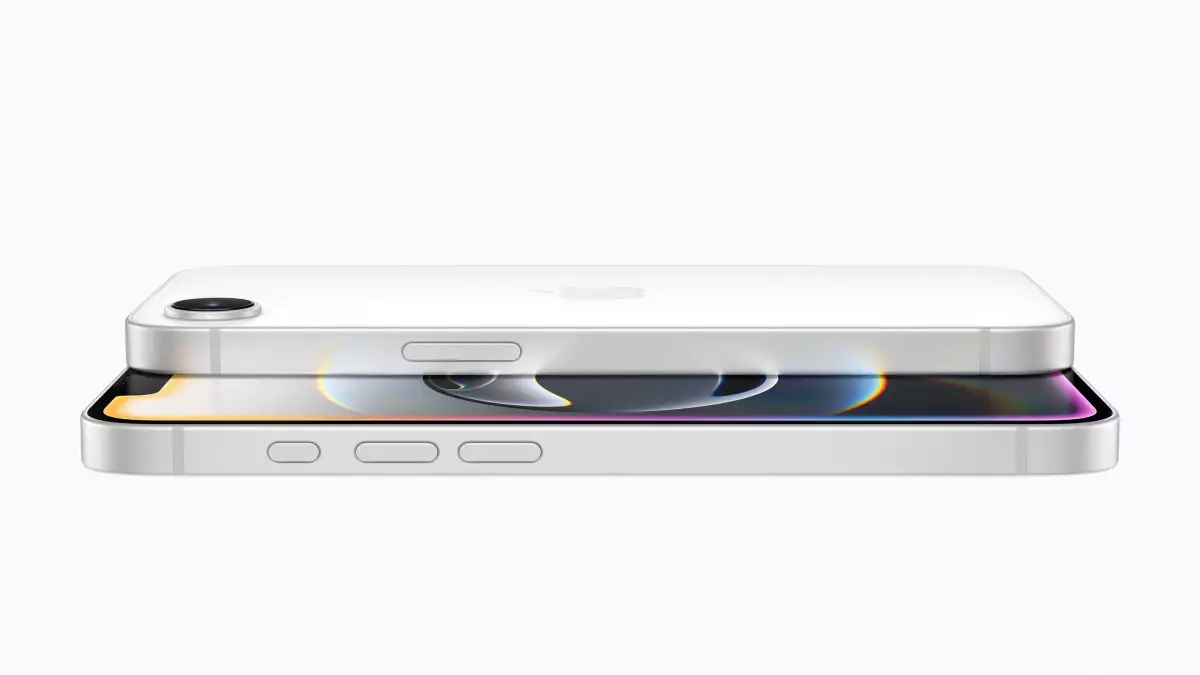Apple has taken a significant step in redefining the budget smartphone landscape with the introduction of the iPhone 16e, marking a notable shift from its predecessor, the iPhone SE. Unlike previous iterations of its budget line that catered to cost-conscious consumers, the latest model is designed to blend stylish aesthetics with advanced technology akin to the flagship offerings of the company. This decisive pivot not only aims to bolster Apple’s market position but also to capture the attention of a discerning audience seeking both performance and value.
One of the most striking changes is the rebranding from the well-known SE (Special Edition) to the iPhone 16e. By shedding the SE designation, Apple is signaling a stronger alignment with its premium models, projecting the device as not just a budget alternative but a legitimate competitor in the smartphone arena. Priced at $599, the iPhone 16e enters a segment that requires distinguishing features to entice customers who might be drawn to rival devices, particularly in emerging markets.
This strategic move reflects a deeper understanding of consumer behavior. Customers are increasingly looking for devices that do not compromise on quality or features despite a lower price point. With this shift, Apple aims to expand its customer base, particularly in markets like China and India where budget smartphones can thrive.
At the core of the iPhone 16e is Apple’s groundbreaking A18 processor—a component that grants it the processing power needed to run advanced features like Apple Intelligence. This in-house chip enables functionality akin to more established AI variants from competitors like OpenAI and Google. Its ability to generate images, summarize texts, and produce written content locally on the device is particularly important in today’s AI-driven world.
Another significant enhancement is the introduction of Apple’s C1 modem, indicating a clear trajectory toward greater self-sufficiency in hardware components. By transitioning away from reliance on third-party manufacturers like Qualcomm and Intel, Apple enhances its control over software optimization and overall performance. This strategic shift consolidates its ecosystem and strengthens the brand’s identity as a tech innovator.
Furthermore, the iPhone 16e boasts an impressive 6.1-inch OLED display that promises “the best battery life ever on a 6.1-inch iPhone.” With advancements stemming from the new six-core A18 chip, it reportedly now offers up to 12 hours more battery life than previous budget models. This increase in battery longevity will likely appeal to users who prioritize prolonged usability without frequent recharges—a significant consideration in today’s fast-paced lifestyle.
In a move away from the previous generation’s design language, the iPhone 16e embraces modern aesthetics with the reintroduction of the iPhone X’s camera notch and the replacement of the Touch ID home button with Face ID for biometric authentication. This design not only enhances security but also aligns with contemporary smartphones that favor an edge-to-edge display.
The camera system is also noteworthy, featuring a single rear-facing 48-megapixel sensor that supports 2x zoom, alongside the capability to capture high-resolution 24-megapixel images. The front-facing TrueDepth camera further enriches the user experience by allowing seamless face unlock and high-quality selfies. Photography enthusiasts will likely appreciate the versatility that this camera setup offers.
The launch of the iPhone 16e is crucial, particularly given Apple’s recent decline in market share in influential markets such as China. The rising competition from domestic brands like Huawei and Xiaomi necessitates a powerful response from Apple. The absence of local availability for Apple Intelligence in mainland China poses a challenge, and partnerships with local giants like Tencent and Alibaba could be pivotal as Apple seeks to tailor its offerings to a local audience.
The iPhone 16e reflects Apple’s commitment to innovation and adaptability in a rapidly evolving technological landscape. By entering the budget segment with a device that embodies flagship qualities, Apple not only enhances its product portfolio but also reestablishes its presence in critical markets. The results of this strategy will unfold over the coming months as consumers respond to both the features and the price point set for this latest release, making it a highly anticipated development in the tech world.

